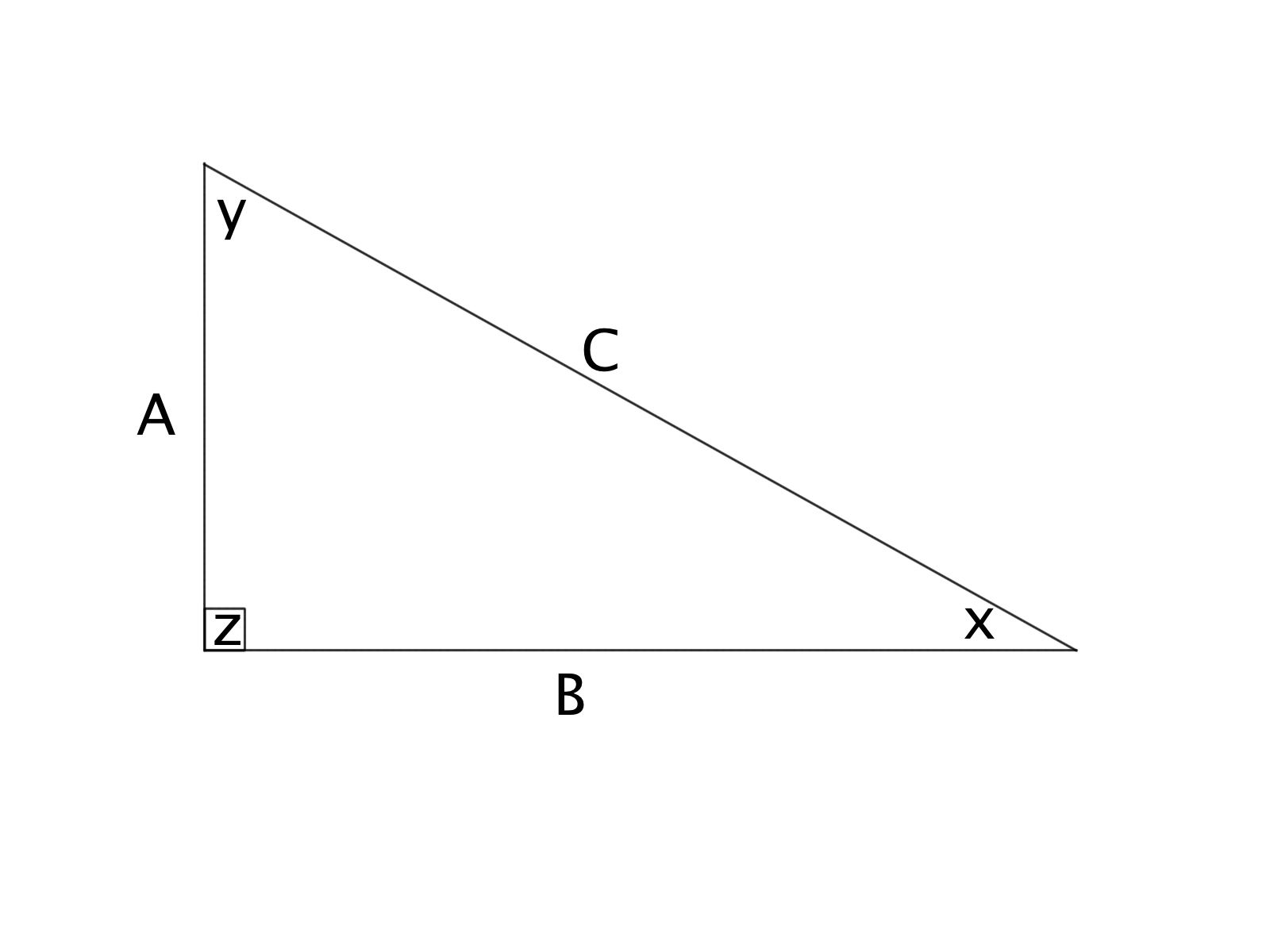All ACT Math Resources
Example Questions
Example Question #21 : How To Find The Length Of The Hypotenuse Of A Right Triangle : Pythagorean Theorem
Given the right triangle in the diagram, what is the length of the hypotenuse?
To find the length of the hypotenuse use the Pythagorean Theorem:
Where 


The hypotenuse is 10 inches long.
Example Question #63 : Plane Geometry

Triangle ABC is a right triangle. If the length of side A = 3 inches and C = 5 inches, what is the length of side B?
1 inches
4 inches
1/2 inches
6 inches
4.5 inches
4 inches
Using the Pythagorean Theorem, we know that 
This gives:
Subtracting 9 from both sides of the equation gives:


Example Question #21 : How To Find The Length Of The Hypotenuse Of A Right Triangle : Pythagorean Theorem

Triangle ABC is a right triangle. If the length of side A = 8 inches and B = 11 inches, find the length of the hypoteneuse (to the nearest tenth).
13.6 inches
184 inches
14.2 inches
13.7 inches
185 inches
13.6 inches
Using the Pythagrean Theorem, we know that 
This tells us:
Taking the square root of both sides, we find that 
Example Question #21 : How To Find The Length Of The Hypotenuse Of A Right Triangle : Pythagorean Theorem

Given:
A = 6 feet
B = 9 feet
What is the length of the hypoteneuse of the triangle (to the nearest tenth)?
10.5 feet
10.1 feet
10.6 feet
10.2 feet
10.8 feet
10.8 feet
Using the Pythagrean Theorem, we know that 
This tells us:
Taking the square root of both sides, we find that
Example Question #41 : Triangles

Given:
A = 2 miles
B = 3 miles
What is the length of the hypoteneuse of triangle ABC, to the nearest tenth?
3.2 miles
3.7 miles
3.6 miles
3.4 miles
3.5 miles
3.6 miles
Using the Pythagrean Theorem, we know that 
This tells us:
Taking the square root of both sides, we find that
Example Question #101 : Act Math
Given that two sides of a right triangle measure 2 feet and 3 feet, respectively, with a hypoteneuse of x, what is the perimeter of this right triangle (to the nearest tenth)?
18 feet
3.6 feet
8.6 feet
6.4 feet
9.4 feet
8.6 feet
Using the Pythagrean Theorem, we know that 
This tells us:
Taking the square root of both sides, we find that
To find the perimeter, we add the side lengths together, which gives us that the perimeter is:
Example Question #172 : Plane Geometry

Example Question #141 : Triangles
Kathy and Jill are travelling from their home to the same destination. Kathy travels due east and then after travelling 6 miles turns and travels 8 miles due north. Jill travels directly from her home to the destination. How miles does Jill travel?
Kathy's path traces the outline of a right triangle with legs of 6 and 8. By using the Pythagorean Theorem


Example Question #491 : Psat Mathematics
Example Question #111 : Plane Geometry
In order to get to work, Jeff leaves home and drives 4 miles due north, then 3 miles due east, followed by 6 miles due north and, finally, 7 miles due east. What is the straight line distance from Jeff’s work to his home?
2√5
15
11
10√2
6√2
10√2
Jeff drives a total of 10 miles north and 10 miles east. Using the Pythagorean theorem (a2+b2=c2), the direct route from Jeff’s home to his work can be calculated. 102+102=c2. 200=c2. √200=c. √100√2=c. 10√2=c
Certified Tutor
Certified Tutor
All ACT Math Resources






















































